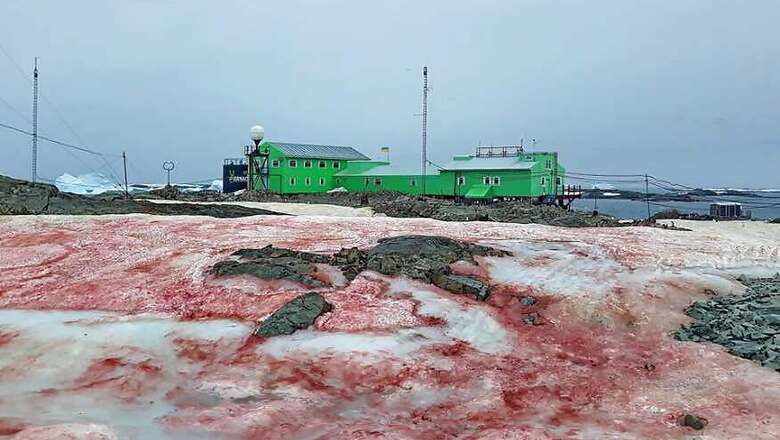
views
It turns out that Antarctica, or at least parts of it, is getting covered by red snow. Basically, snow that is anything less than the pearl white colour we all link with it, just looks weird. And perhaps even freaky too. But before the climate enthusiasts claim that this is global warming and that the planet is in big trouble (it may be otherwise, that is debatable), the effects of this are still up for debate. And as for the red colour, there is a very rational explanation for it.
This blood red snow in Antarctica was first shared by Ukrainian scientist and biologist Andriy Zotov and this picture is of a research station in Antarctica. The snow is red because of a red-pigmented, microscopic algae called Chlamydomonas nivalis chlamydomonas, which thrives in freezing water as the ice melts. Algae sprouts in the snow whenever the conditions are favorable—and it is summer right now, by Antarctica’s standards. And thus the spread of red colour over the surface. “Because, besides green pigment - chlorophyll, their cells contain also a red carotene layer, red spots occur on snow as if from raspberry jam,” says Ukraine’s Ministry of Education and Science in a Facebook post.
Scientists also refer to this as “watermelon snow”, not just because of its colour but also the pleasant sweet aroma that it generates. But there is one problem with the red colour on the snow. The fact that the ice isn’t the natural white colour means it reflects sunlight lesser than it ideally would. This results in heat getting trapped, which then leads to faster melting.
This is not the first time that we have seen a similar phenomenon anywhere on earth. In January, sea foam was washed ashore in a large quantity in the Spanish city of Tossa de Mar, according to reports.




















Comments
0 comment